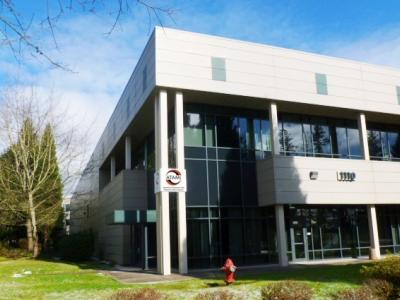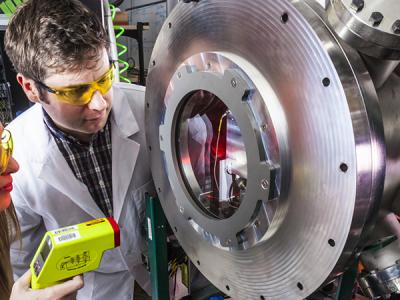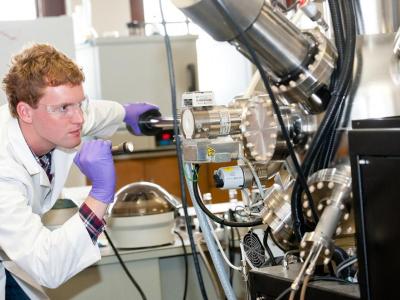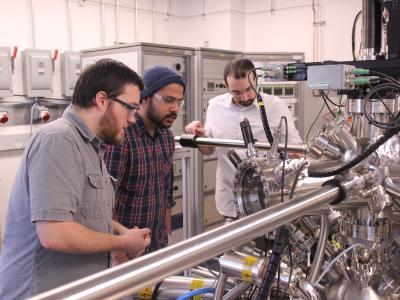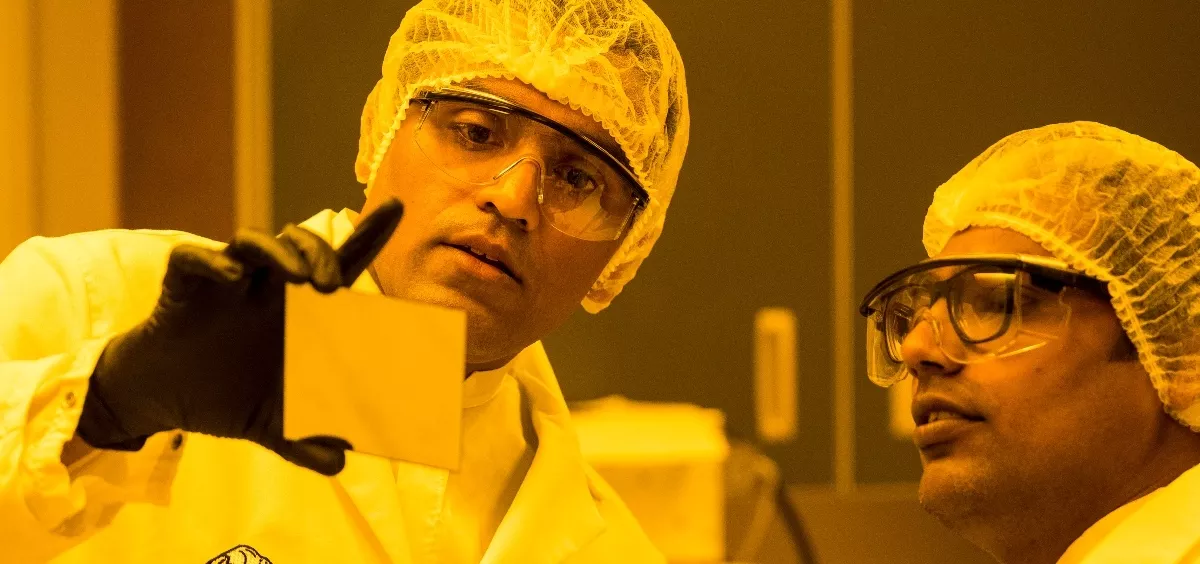The next generation of semiconductors
The U.S. semiconductor industry is vital to our national security and the economy of Oregon. Our location within the Silicon Forest gives us access to the most comprehensive ecosystem of semiconductor companies in the U.S.
Our faculty is integral to a national network that includes several consortiums of industry, academic, and government organizations aiming to revolutionize the semiconductor industry by supporting emerging technologies like AI-assisted design.
Oregon State, classified as an R1 research institution and recognized as the seventh largest engineering college in the nation, has the talent and facilities to advance semiconductor research and education. With strong partnerships across industry and government, OSU is expanding its infrastructure and talent pipeline to meet national needs.
Faculty
Our faculty — including members in the National Academy of Engineering and National Academy of Inventors, and several NSF CAREER awardees — bring expertise that spans numerous areas related to microelectronics.
Facilities
Our advanced facilities include a shared integrated electronics lab, a cleanroom, and the industry-connected ATAMI prototyping facility. In 2026, the Jen-Hsun Huang and Lori Mills Huang Collaborative Innovatino Complex will add a prototyping lab, and one of the nations most powerful academic supercomputers.
Research
We are focused on accelerating collaborative research in advanced AI and semiconductor technologies across four primary research areas:
Areas of Focus
- Advances in analog/digital converters
- Low-cost MIMO transceivers using CMOS technology
- Low-cost phased array atenna in silicon germanium
- Output prediction logic technique
- Modeling and design of integrated circuit protection systems
- Resource-efficient AI accelerators
- Batteryless and power-autonomous electronics [using RF and thermoelectric energy harvesting]
- Side-channel resistance crypto designs
- Advances in amorphous oxide semiconductors that have revolutionized display technologies, including transparent thin-film transistors
- Pioneering research in dielectric, magnetic and piezoelectric materials
- Groundbreaking work in tunneling electronics, sensors, and advanced manufacturing methods
- Nanolithography, high sensitivity resists for extreme ultraviolet patterning
- ALD of 2D semiconductor dichalcogenides and nanolaminates
- Development of semiconductor inks for inkjet-printed thin film transistors and solar cells
- Characterization of processes using operando techniques
- Sustainable solution based processing to improve materials utilization
- Advances in supply chain logistics/life-cycle analysis
- Flexible and stretchable electronics for robotics and wearable devices
- Heterogeneous integration for IC-enabled biosensors at scale
- High-resolution 3D printing for direct-write interconnects and in-package RF devices
- Anti-tamper solutions based on physical unclonable functions
Related Stories
Researchers at Oregon State University and Baylor University have made a breakthrough toward reducing the energy consumption of the photonic chips used in data centers and supercomputers. Learn more
Oregon State University will spearhead a $1 million National Science Foundation project to advance semiconductor technologies in the Pacific Northwest.
Education and workforce development
The College of Engineering, one of the nation’s largest, produces graduates who are highly valued and in demand in the semiconductor sector. Our current students and recent graduates are developing new technologies and improving the performance and efficiency of existing devices. And our alumni, including NVIDIA CEO Jensen Huang, have been shaping the industry for decades.
Oregon State is a founding member of the Northwest University Semiconductor Network, led by Micron Technology, Inc. The network will support research and experiential learning opportunities in the semiconductor industry, with equitable access for underrepresented students, including those in rural and tribal communities.
Commercialization opportunities
Strong infrastructure for commercializing technology already exists at Oregon State. The OSU Advantage team brings together unparalleled, holistic resources and activities to maximize the university’s impact. The team connects to a wide range of resources supporting innovation and entrepreneurship; develops intellectual property protection strategies; supports the development of high-growth companies through tailored programing and aligned funding; executes research, confidentiality, material transfer, licensing, and other industry agreements; and provides access to unique tooling and development opportunities aligned with advanced technologies and manufacturing.
The College of Engineering has incubated a number of technologies that have spun out into successful entrepreneurial ventures, including Amorphyx (semiconductors), Inpria (semiconductors), NuScale Power(scalable modular reactors), and Agility Robotics (robotics).
Semiconductor @ Oregon State newsletter
Learn about emerging semiconductor research, education, and collaborative initiatives with industry partners. Discover opportunities to innovate semiconductor solutions that shape the future of technology while strengthening the region's economy.
